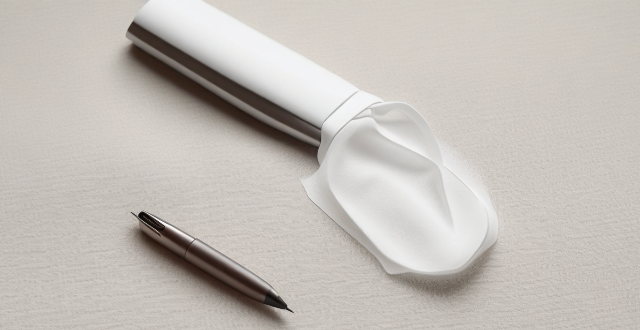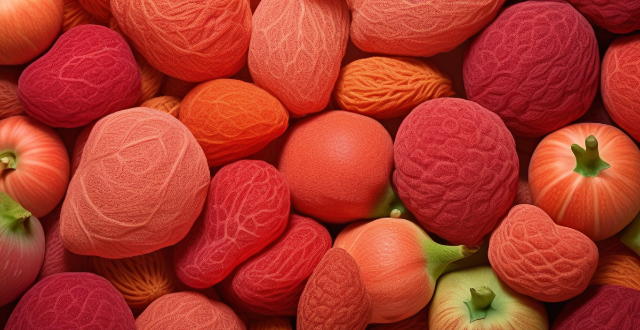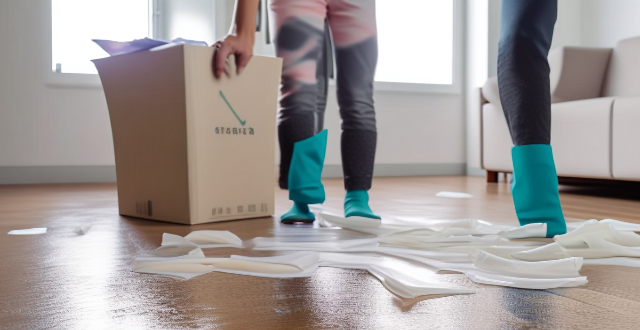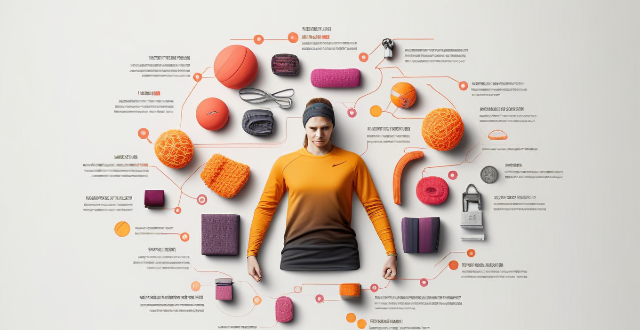Garment Bleach

What's the best way to treat set-in stains on white clothing ?
Set-in stains on white clothing can be stubborn and difficult to remove, but with the right approach, they can often be successfully treated. Here are some steps to follow: 1. Identify the Stain: First, identify the type of stain you are dealing with. Different stains require different treatments. For example, protein stains like blood or grass require a different approach than tannin stains like tea or coffee. 2. Act Quickly: The sooner you treat a stain, the easier it is to remove. If the stain is still wet, blot it with a clean cloth or paper towel to remove as much of the substance as possible. 3. Pre-Treat the Stain: Before washing, pre-treat the stain with a suitable stain remover. Choose a product that is safe for use on white clothing and apply it directly to the stain following the instructions on the label. Let it sit for the recommended time. 4. Wash in Hot Water: Wash the garment in hot water, using a detergent that is designed for white clothing. Check the care label on your garment to ensure that it can be washed in hot water. If not, use the warmest water recommended. 5. Use Chlorine Bleach if Necessary: If the stain persists after washing, you can use chlorine bleach. However, be sure to check the care label on your garment first. Some fabrics may not be able to handle bleach. If your garment is made of a material that can be safely bleached, add chlorine bleach to the wash cycle according to the package instructions. 6. Rinse Thoroughly: Rinse the garment thoroughly to remove all traces of the stain and any cleaning products used. 7. Dry and Check: Dry the garment and check to see if the stain has been removed. If not, repeat the process before drying again. Once the stain is gone, you can dry the garment as usual. In conclusion, treating set-in stains on white clothing requires patience and persistence. By identifying the stain, acting quickly, pre-treating, washing in hot water, using chlorine bleach if necessary, rinsing thoroughly, drying, and checking, you can often successfully remove even the most stubborn stains.

Is there a natural alternative to bleach that can be used for disinfecting surfaces ?
There are several natural alternatives to bleach that can be used for disinfecting surfaces, including vinegar, hydrogen peroxide, and tea tree oil. These alternatives are effective against bacteria, viruses, and fungi, and are also safer and eco-friendly compared to bleach. Vinegar is inexpensive and easy to find, but has a strong smell and may damage certain surfaces if left on for too long. Hydrogen peroxide is also inexpensive and easy to find, but can be harmful if ingested or inhaled in large quantities and may fade certain fabrics or surfaces if left on for too long. Tea tree oil is a natural antimicrobial agent that is safe for pets and children, but is expensive compared to other natural disinfectants and may cause skin irritation if not diluted properly. By using these natural disinfectants, you can keep your home clean and healthy without exposing yourself or your family to harsh chemicals.

How to care for and maintain your sports fashion garments ?
Sporting fashion garments are designed to be both stylish and functional, but they also require special care to maintain their quality and appearance. Here are some tips on how to properly care for and maintain your sports fashion garments: Washing instructions include reading the label, sorting clothes, using a gentle detergent, hand washing or machine washing on delicate cycle, and avoiding tumble drying. Maintenance tips include storing properly, avoiding ironing, spot cleaning stains, rotating garments, and repairing tears and holes. By following these care and maintenance tips, you can extend the lifespan of your sports fashion garments and keep them looking their best for years to come.

Is there a natural way to clean stains off my clothes ?
Removing stains from clothes can be challenging, but natural methods like using white vinegar, baking soda, lemon juice, hydrogen peroxide, and salt can effectively clean various types of stains. These techniques are gentle on the environment and clothing.

How do I remove ink or pen marks from my clothing ?
Removing ink or pen marks from clothing can be challenging, but with the right techniques, it's often possible. Identify the type of ink, act quickly to blot wet ink, pre-treat the stain using appropriate methods for water-based, oil-based, or permanent marker ink, machine wash following care label instructions, check the stain before drying, and dry according to care label instructions. Always test cleaning solutions on an inconspicuous area first and consider professional cleaners for delicate or valuable garments. Patience and persistence are key when dealing with stubborn stains.

How do UV-protective fabrics influence the design of outdoor sportswear ?
The integration of UV-protective fabrics in the design of outdoor sportswear has significantly influenced its functionality and safety. Material selection, garment construction, aesthetics, and durability are key considerations in this process. Designers ensure that these garments offer protection from harmful UV rays while also being comfortable, durable, and visually appealing.

How do anti-bacterial fabrics contribute to sportswear innovation ?
Anti-bacterial fabrics contribute to sportswear innovation by improving hygiene, enhancing durability, improving performance, and offering customization options. They reduce the growth of bacteria in garments, keeping them fresher for longer periods, extending their lifespan, and providing a comfortable and dry environment during physical activities. Manufacturers can choose from various antimicrobial agents and treatments to create unique garments that cater to specific needs.

Are there any smart strategies for packing clothing to avoid wrinkles ?
Smart strategies for packing clothing to avoid wrinkles include rolling instead of folding, using tissue paper or dry cleaner's plastic to layer between items, packing heaviest items on bottom, utilizing every bit of space, hanging what you can, choosing wrinkle-resistant fabrics, and handling delicates with care. These tactics help minimize wrinkles in packed clothes, keeping your wardrobe looking crisp and fresh throughout your journey.

What types of disinfectants are safe to use around children and pets ?
The article discusses various types of disinfectants that are safe for use around children and pets. These include alcohol-based disinfectants, hydrogen peroxide, vinegar, baking soda, chlorine bleach (in a dilute solution), steam cleaning, and tea tree oil. It emphasizes the importance of proper usage, storage, and supervision to ensure safety for all family members, including pets.

What are the best practices for handling and preparing raw meat to prevent contamination ?
To prevent contamination when handling and preparing raw meat, it is essential to wash hands before and after handling the meat, clean utensils and surfaces with hot, soapy water or a bleach solution, keep raw meat cold in the refrigerator or freezer, avoid cross-contamination by not letting raw meat come into contact with ready-to-eat foods, cook meat thoroughly using a food thermometer, and store cooked meat properly in the fridge or freezer. By following these best practices, you can ensure that the meat you prepare is safe to eat and reduce the risk of contaminating your kitchen.

How do I clean and store my reusable face mask ?
Face masks have become an essential part of our daily lives, especially during the COVID-19 pandemic. If you're using a reusable face mask, it's crucial to clean and store it properly to maintain its effectiveness and longevity. Here's a step-by-step guide on how to do so: ### Cleaning Your Reusable Face Mask Hand Washing * Fill a basin or sink with warm water: Make sure the water is not too hot to avoid damaging the fabric. * Add a mild detergent: Use a gentle soap or laundry detergent that is free from bleach and harsh chemicals. * Soak the mask: Let the mask soak in the solution for at least 30 minutes. * Gently scrub: Use your hands or a soft brush to gently scrub the mask, paying special attention to the areas around the nose clip and ear loops. * Rinse thoroughly: Rinse the mask under running water until all soap residue is removed. * Lay flat to dry: Place the mask on a clean towel or hang it to air dry completely before using it again. Machine Washing * Place the mask in a mesh laundry bag: This will protect the mask from getting damaged in the washing machine. * Select a delicate cycle: Use cold or warm water and set your washing machine to a gentle cycle. * Use mild detergent: Choose a detergent that is free from bleach and harsh chemicals. * Dry the mask: After washing, either lay the mask flat to air dry or tumble dry on low heat. ### Storing Your Reusable Face Mask Proper Storage Techniques * Keep it clean and dry: Ensure that your mask is completely dry before storing it to prevent mold growth. * Store in a breathable container: Use a paper bag or a breathable fabric pouch to store your mask. Avoid using plastic bags as they can trap moisture. * Avoid direct sunlight: Direct sunlight can degrade the fabric over time, so store your mask in a cool, shaded area. * Separate dirty and clean masks: Keep your clean masks separate from used ones to avoid cross-contamination. When to Replace Your Mask Visible damage or wear: If your mask has holes, torn seams, or is significantly faded, it's time to replace it. Loss of shape or fit: If the mask no longer fits snugly against your face or if the nose strip is no longer effective, consider replacing it. Reduced effectiveness: If you notice a decrease in filtration efficiency or breathability, it may be time for a new mask.

Which industries commonly use combination motor drives ?
Combination motor drives, or variable frequency drivesCombination motor drives, or variable frequency drives are electronic devices that control the or variable frequency drives (VFDs), are electronic devices that control the speed of AC electric motors. They are widely used in various industries for energy saving, control precision, and process optimization. Some sectors where combination motor drives are commonly employed include manufacturing and production industries, such as food and beverage processing, pharmaceuticals, automotive manufacturing, paper and pulp, energy and utilities, transportation and logistics, HVAC and refrigeration, textile and garment industry, pumps and compressed air systems. The adaptability and efficiency benefits of combination motor drives make them an integral part of modern industrial processes.

Can protective clothing be reused after being exposed to chemicals or biological agents ?
The reusability of protective clothing after exposure to chemicals or biological agents is determined by factors such as the type of garment, nature of contaminants, and level of exposure. Potential risks include inadequate decontamination, material degradation, and cross-contamination. Best practices for handling and disposal involve immediate removal, proper storage, appropriate decontamination processes, and safe disposal methods like incineration or landfill disposal according to local regulations. Adherence to these practices is crucial for maintaining safety and preventing further contamination.

Can vinegar be used as a natural stain remover for clothes ?
Vinegar can be used as a natural stain remover for clothes due to its acidic properties and antimicrobial benefits. It is effective in removing various types of stains, including grass, blood, wine, coffee, tea, and sweat. To use vinegar as a stain remover, apply it directly to the stain, let it sit for 5-10 minutes, scrub gently, rinse with cold water, and wash according to care label instructions. Vinegar is cost-effective, environmentally friendly, and versatile. However, it should be tested on an inconspicuous area before use and avoided on delicate fabrics.

What are some quick and easy ways to get my clothes clean ?
Here are some quick and easy ways to keep your wardrobe fresh and clean: 1. Spot Cleaning: For small stains or spills, dampen a cloth with water or a mild detergent and gently blot the affected area until the stain is removed. 2. Hand Washing: Fill a sink or basin with warm water and add a small amount of gentle detergent. Gently agitate clothing items in the water, then rinse thoroughly and hang to dry. 3. Machine Washing: Sort clothes by color and fabric type before washing. Use a gentle cycle and cold water for delicate items, and warmer water for more durable fabrics. 4. Dry Cleaning: Check care labels on garments made from silk, wool, or other delicate materials. If dry cleaning is recommended, take clothes to a professional dry cleaner. 5. Air Drying: Hang clothes outside on a clothesline or indoors on a drying rack to save energy and prolong their lifespan. This method also helps eliminate wrinkles and static cling. 6. Steaming: Hang clothes in a steamy bathroom after a shower or use a handheld garment steamer to remove wrinkles and odors. By incorporating these methods into your routine, you can keep your wardrobe looking its best without spending hours on laundry day.

What are the best ways to wash clothes quickly and effectively ?
This article discusses the best ways to wash clothes quickly and effectively. It covers preparation steps such as sorting clothes, pre-treating stains, and checking pockets. It also explains how to set up a washing machine with the right cycle, warm water, and detergent. Handwashing clothes is another option that involves soaking clothes in warm water with detergent, scrubbing gently, rinsing thoroughly, and hanging to dry. After washing, drying clothes properly is important to prevent wrinkles and damage. Overall, following these steps can help you save time and keep your clothes clean and fresh.

How long does the virus that causes COVID-19 survive on surfaces, and how should those surfaces be cleaned and disinfected ?
The COVID-19 virus, SARS-CoV-2, can survive on surfaces for varying lengths of time, depending on factors such as the type of surface, temperature, humidity, and the amount of virus present. The timeline for virus survival on surfaces includes up to 4 hours on copper, up to 24 hours on cardboard, and up to 72 hours on plastic, stainless steel, glass, banknotes, and coins. To effectively clean and disinfect surfaces, it is recommended to follow a two-step process: cleaning the surface with soap or detergent and water, and then disinfecting the surface with an EPA-approved disinfectant. Examples of approved disinfectants include diluted bleach, alcohol solutions with at least 70% alcohol, hydrogen peroxide (3%), and quaternary ammonium compounds. It is important to wear gloves when handling disinfectants, ensure proper ventilation, never mix different cleaning products, and disinfect frequently touched surfaces regularly.

How do I properly clean and sanitize second-hand items before using them ?
The provided text offers a comprehensive guide on properly cleaning and sanitizing second-hand items to ensure their safety for use. The steps are divided into general cleaning procedures, specific instructions for different types of items like clothing, footwear, furniture, kitchenware, toys, and electronics, and additional tips on sanitization. The process involves inspection, initial cleaning, disassembly (if needed), soaking for smaller items, and using appropriate cleaning methods for various items. Sanitizing tips emphasize the wise use of disinfectants, ensuring ventilation, protecting oneself from harsh chemicals, and drying items thoroughly to prevent mold growth. This detailed guide ensures that second-hand items are not only reused but also recycled safely.

What are the best practices for storing food and water for emergencies ?
When it comes to emergency preparedness, having a reliable supply of food and water is essential. Here are some best practices to ensure that you have what you need in case of an emergency: Food Storage: - Rotate regularly - Choose wisely - Portion control - Stay organized - Store safely Water Storage: - Quantity matters - Container choice - Replace regularly - Sanitize containers - Maintain accessibility Additional Tips: - Have a plan - Prepare for special needs - Be ready to cook

Are there any risks associated with mixing certain natural ingredients in homemade cleaners ?
Using natural ingredients for homemade cleaners is a popular and eco-friendly choice, but it's important to be aware of the potential risks associated with mixing certain substances. These risks include bacterial growth, chemical reactions, skin irritation, and corrosion. To safely use natural ingredients for cleaning purposes, research their properties and potential interactions, label your cleaners clearly, store them properly, test a small amount before extensive use, and wear appropriate protective gear. By following these tips, you can ensure that your homemade cleaners are effective and safe for both you and the environment.

Who are the most famous celebrities involved in recent scandals ?
Scandals involving celebrities often capture public attention and generate widespread media coverage. These incidents can range from legal troubles to personal controversies, affecting the reputations of those involved. Here are some of the most famous celebrities who have been embroiled in recent scandals: - Lori Loughlin was caught up in the college admissions scandal known as "Operation Varsity Blues." She and her husband were accused of paying $500,000 to have their daughters designated as recruits to the University of Southern California crew team, despite neither girl having participated in the sport. - R&B singer R. Kelly has faced numerous allegations of sexual misconduct over the years, including accusations of holding women against their will. He was arrested on federal charges related to child pornography and obstruction of justice, and later convicted of racketeering and sex trafficking. - Once one of Hollywood's most powerful producers, Harvey Weinstein's career came crashing down due to multiple sexual assault allegations. Several women came forward with stories of Weinstein's sexual harassment and assault, leading to his conviction in 2020 of rape and sexual assault. - Actor Jussie Smollett is best known for his role on "Empire." However, he made headlines for an alleged hate crime attack that many believed he staged. He claimed he was attacked by two men who shouted racist and homophobic slurs before beating him and pouring bleach on him. Investigators later concluded that Smollett had paid the men to carry out the attack. - The high-profile defamation case between actors Johnny Depp and Amber Heard revolved around domestic abuse allegations. Heard wrote an op-ed piece in which she described herself as a victim of domestic abuse, although she did not mention Depp by name. Depp sued her for defamation, claiming it damaged his reputation. Both parties accused each other of physical violence during their marriage. - Actor Armie Hammer became the subject of controversy due to disturbing DM exchanges that allegedly showed a dark and possibly cannibalistic side to his personality. Screenshots of Hammer's messages, which included graphic discussions about eating his date, went viral online. This led to a backlash against Hammer and further investigation into his past relationships.

How does protective clothing work to prevent exposure to hazardous materials ?
Protective clothing shields wearers from hazardous materials through barrier materials, sealed enclosures, breathability features, and disposability. Its effectiveness depends on proper training, fit, maintenance, and responsible disposal practices.

What are some common sources of harmful chemicals in household products, and how can we avoid them ?
The text provides a summary of common sources of harmful chemicals in household products, such as cleaning products, air fresheners, plastic products, and personal care products. It then offers advice on how to avoid these chemicals by reading labels carefully, choosing eco-friendly options, making your own cleaning products, buying from trusted brands, using natural air fresheners, avoiding plastic whenever possible, and educating yourself about new research. By following these steps, you can create a healthier home environment for yourself and your family.

What are some creative ways to upcycle old clothing ?
Upcycling old clothing is a creative and sustainable way to reduce waste and give new life to your favorite outfits. In this article, we will explore some innovative ideas for upcycling old clothes that can help you save money, reduce your environmental impact, and express your unique style. One of the most common ways to upcycle old clothes is by repurposing them into new outfits. Another way to upcycle old clothes is by altering them for different occasions. If you're looking for more unconventional ways to upcycle old clothes, consider these ideas: make a tote bag, create home decor items, make pet accessories, or craft DIY beauty products. By getting creative with upcycling old clothes, you can not only save money but also contribute to a more sustainable lifestyle.

How do smart fabrics work in sports clothing ?
Smart fabrics in sports clothing incorporate conductive threads and sensors to monitor movements, vital signs, and environmental factors. They provide real-time feedback for performance enhancement and injury prevention. Features like thermoregulation and self-cleaning improve comfort and durability. Integration with devices allows for a seamless user experience, while customization options offer personalized fits and designs.

What are the latest advancements in sportswear technology ?
The latest advancements in sportswear technology include smart garments with sensors for real-time performance feedback, improved materials for comfort and moisture management, customized footwear for personalized fit and support, and augmented reality training for interactive and engaging learning experiences. These innovations are enhancing athletes' efficiency, comfort, and overall experience, helping them achieve their goals faster and more effectively.

What is the role of nanotechnology in designing sports apparel ?
Nanotechnology has revolutionized sports apparel design by improving performance, comfort, durability, and enabling the development of smart garments. Nanofibers and nanoparticles enhance fabric strength, flexibility, and moisture-wicking capabilities, while lightweight and breathable fabrics increase comfort. Smart garments with sensors monitor vital signs in real-time for optimized training.

What is the significance of compression garments in sports attire ?
Compression garments are tight-fitting clothes designed to provide a snug fit and exert pressure on the body. These garments offer numerous benefits that can enhance performance, recovery, and overall well-being in sports attire. Some of the key benefits include improved blood circulation, enhanced recovery, temperature regulation, support and stability, and psychological advantages. By promoting better blood flow, compression garments help to deliver more oxygen to working muscles, remove metabolic waste, reduce muscle vibration, and minimize inflammation and swelling after exercise. They also regulate temperature in both hot and cold environments, provide joint and muscle support, and boost confidence and mental preparation for athletes. Incorporating compression garments into sports attire can optimize performance and recovery, making them a valuable addition for athletes across various disciplines.

What steps can consumers take to maintain food safety at home ?
Consumers can maintain food safety at home by following four main steps: proper handling, safe preparation, safe storage, and safe consumption of food. They should wash their hands before handling food, separate raw and cooked foods, clean utensils and work surfaces, cook food thoroughly, refrigerate promptly, store foods at the right temperature, reheat leftovers thoroughly, and avoid cross-contamination. By consistently practicing these steps, consumers can reduce the risk of foodborne illnesses and stay healthy.